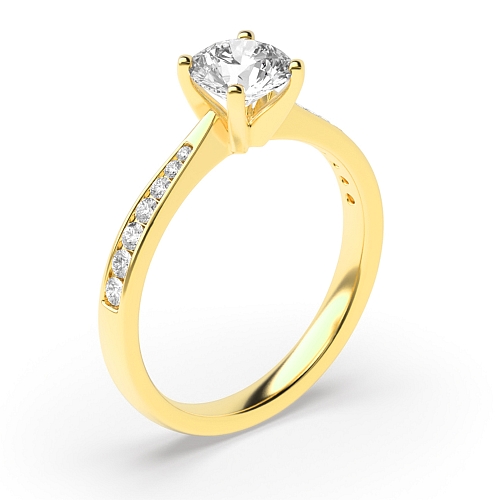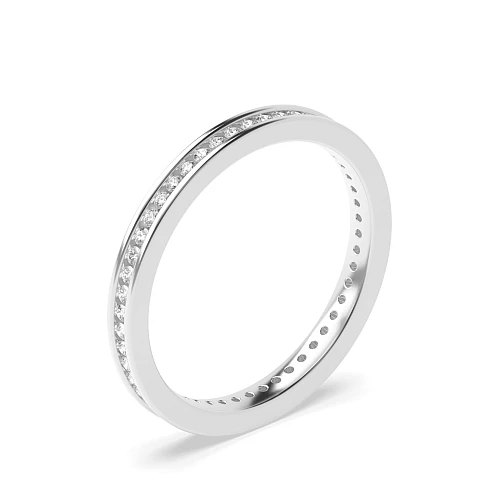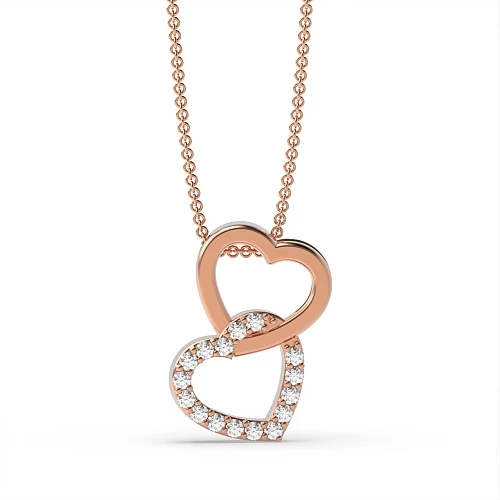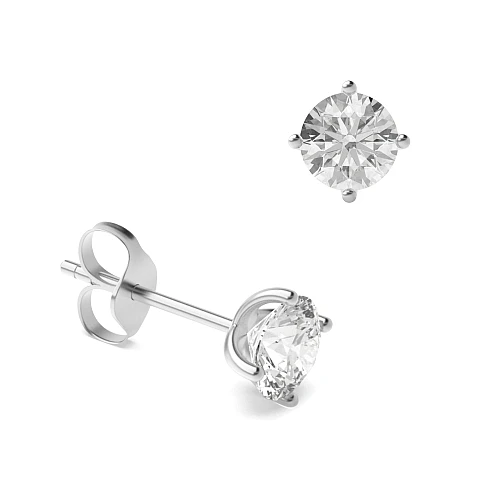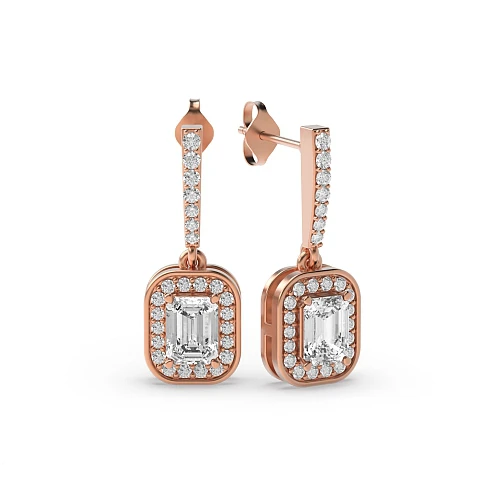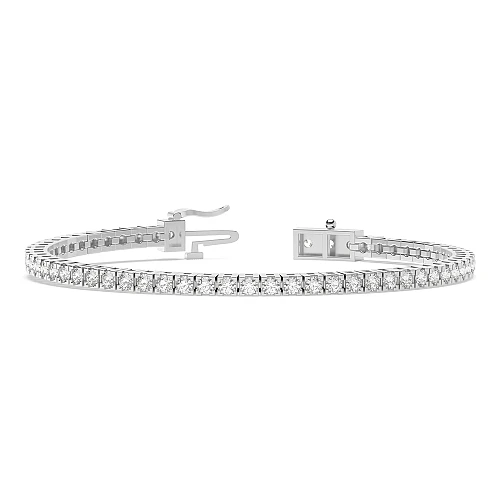Our metal guide will provide you with some key features of each precious metal used to craft our jewellery. Ideal for allowing you to select something that will be with you for a lifetime
Metal Types
Why Gold Is Used For Jewellery?
Following are the main reasons why gold is used for jewellery:
- It does not tarnish
- It does not react to air and rust like iron
- It is malleable
- It holds its value
What Is Gold Colour?
Gold in its natural form is always yellow. It does not come in any other natural colour. Its colour can be changed by mixing different colour alloys. The choice of gold depends on the particular type of jewellery. The following are the different colours that are currently very popular.
- Yellow
- White
- Rose/Pink
What Is Gold Purity?
The higher the proportion of gold used in the final metal, the more valuable and expensive the metal will be. So all other things being the same, an 18K ring will be more expensive than a 14K ring and a 14K ring will be more expensive than a 9K ring.
- 9K gold denotes 37.5% gold purity. 9K is the minimum standard used in UK and is widely used for making profound jewellery to minimise the cost.
- 14K gold denotes 58.3% gold purity and it often comes stamped with 585.
- 18k gold denotes 75.0% gold purity. 18K is highly recommended for fine jewellery.
- 22K gold denotes 91.7% gold purity. Gold in 22K is very soft and is not suitable for manufacturing studded jewellery. It can be used for plain gold jewellery.
- 24K gold denotes 100% gold purity. Gold in this form is extremely soft and cannot be used for any type of jewellery making.
What Is Platinum?
Platinum is the most expensive and rarest metal, it is naturally white and in very high demand. Platinum is used in its purest form of approximately 95%. Gold in its purest form is soft and not used in studded jewellery, while platinum metal can be used in its purest form. Platinum is a very dense and durable metal that feels heavier than gold and other metals used for jewellery.
Why Platinum Is Used For Jewellery?
Platinum has become popular over the last 200 years for the following reasons:
- Hypoallergenic metal: Platinum is used in its purest form which makes it hypoallergenic, and therefore ideal for sensitive skin.
- Naturally white metal: Platinum is naturally white so it compliments studded jewellery exquisitely.
- Lustre, look feel: Platinum has a very high lustre and has the right look and feel for high-value pieces.
- High density: Platinum has a very high density which makes it a very durable metal compared to other metals commonly used in jewellery
Gold Vs Platinum
The following are the main differences:
- Natural Colour: Platinum is naturally white compared to gold which is yellow.
- Purity: Normally, platinum is used in almost its purest form, whereas gold is not strong enough for studded jewellery in its purest form
- Durability: Platinum is a much denser metal than gold which makes it considerably more durable
- Price: Platinum is more expensive and weighs almost 40% more than gold for the same volume. Platinum’s purity also increases its price.
- Look Feel: Platinum's tactile feel and lustre makes it feel heavier and rich.
About Silver
Silver is one of the precious metals commonly used for jewellery. It is a white and bright metal that is suitable for jewellery made with semi-precious stones. Silver is traditionally used for tableware and coins and is associated with wealth and glamour. However, silver will tarnish naturally over time.
What Is Sterling Silver?
Sterling silver refers to the composition of silver. It is normally 92.5% silver mixed with 7.5% of other metals, mainly copper. Sterling silver is slightly harder than pure silver making it better suitable for precious and semi-precious stone jewellery. However, compared to Gold and Platinum, Sterling silver is a soft metal. This inherent softness contributes to the delicate elegance of your ring but requires some additional care.
High-Quality Silver From Abelini
We make sure you get nothing but the best quality silver jewellery by following our exacting quality standards:
- Nickel Free: We make sure that our silver is completely nickel-free.
- Plating: We use high-standard gold and rhodium plating.
- Strict quality control and the latest processing techniques are used.
About Brass Metal
Brass is a yellow metal that is an alloy of copper and zinc. It’s highly popular for fashion jewellery and in modern fashion jewellery ranges. You will find more brass jewellery than gold or silver jewellery.
Nickel- Free Brass Jewellery From Abelini
We process all of our brass with the latest technology and plating techniques to make it the perfect choice in modern fashion jewellery and for gifting.
Brass Vs Gold And Silver?
Brass has gained high popularity in modern fashion jewellery due to the following reasons.
- Colour: It has a similar colour to gold which makes it a worthy substitute.
- Non-Tarnishing Quality: Brass doesn't tarnish like silver. Unfinished brass can tarnish over time as a reaction to air and moisture, but it can be easily cleaned.
- Price/Cost: Brass is a fraction of the price of gold
- Durability: If proper care is taken, finished brass can last for years.
Type Of Plating
Rhodium Plating
What Is Rhodium?
Rhodium is ten times more expensive than gold. It is not suitable for jewellery due to the prohibitive processing feasibility for jewellery-making. Rhodium is very brittle and stressed and cannot be crafted or moulded.
What Is Rhodium Plating?
Rhodium plating is the process of coating a layer of rhodium onto the jewellery metal. Rhodium plating gives jewellery a high, bright, white and mirror-like finishing. Rhodium plating can be of many different colours like hair colour including black rhodium plating.
Gold Vs Rhodium Plating
Gold plating is mainly used when the main metal is white and needs to be transformed into a more yellow colour. Rhodium plating is mainly used to make white gold metal and to give it a 100% white and bright look.
Gold Plating
What Is Gold Plating?
It is the process of coating a thin layer of gold onto other jewellery metals. This is highly popular for adding colour to precious and semi-precious jewellery.
What Is Vermeil
Vermeil is a French word used for gold plated silver. Traditionally, it is called silver-gilt. With a thick layer of gold-coated over silver, it is very popular and ideal for jewellery. It is significantly less expensive than gold jewellery and can be used to protect silver from tarnishing and other reactions.
Conversion Chart for Precious Metal Weight - Weight Units Conversion
Precious Metal Weight Conversion Chart
Let's convert 3gms 9kt white gold weight in 18kt white gold using a conversion chart. Follow the below steps to convert the weight.
Step 1. Select the type of metal you prefer for your item. For example, you may choose 9ct white gold, which is located on the left-hand side.
Step 2. Locate the metal on the chart's top to convert weight, like 18Kt White Gold.
Step 3. Multiply the weight of the item by 1.32 (3gms we want to convert).
An item weighing 3 grams in 9 karat white gold would be equivalent to 3.96 grams (3 x 1.32 = 3.96g) in 18 karat white gold.
|
|
Palladium (950) |
Platinum (950) |
22ct Yellow Gold |
18ct White Gold |
18ct Rose Gold |
18ct Yellow Gold |
9ct White Gold |
9ct Rose Gold |
9ct Yellow Gold |
Sterling Silver |
Wax / Resin |
| Wax / Resin | 12 | 21.211 | 18.737 | 16.632 | 15.948 | 16.422 | 13.264 | 11.895 | 11.685 | 10.895 | 1 |
| Sterling Silver | 1.101 | 1.98 | 1.745 | 1.545 | 1.48 | 1.525 | 1.225 | 1.095 | 1.075 | 1 | 0.092 |
| 9ct Yellow Gold | 1.027 | 1.905 | 1.67 | 1.47 | 1.405 | 1.45 | 1.15 | 1.075 | 1 | 0.933 | 0.086 |
| 9ct Rose Gold | 1.009 | 1.885 | 1.65 | 1.45 | 1.385 | 1.43 | 1.13 | 1 | 0.983 | 0.916 | 0.085 |
| 9ct White Gold | 0.905 | 1.755 | 1.52 | 1.32 | 1.255 | 1.3 | 1 | 0.897 | 0.881 | 0.822 | 0.076 |
| 18ct Yellow Gold | 0.731 | 1.455 | 1.22 | 1.02 | 0.972 | 1 | 0.808 | 0.725 | 0.712 | 0.664 | 0.061 |
| 18ct Rose Gold | 0.752 | 1.5 | 1.265 | 1.065 | 1 | 1.03 | 0.832 | 0.746 | 0.733 | 0.684 | 0.063 |
| 18ct White Gold | 0.722 | 1.435 | 1.2 | 1 | 0.959 | 0.988 | 0.798 | 0.716 | 0.703 | 0.656 | 0.061 |
| 22ct Yellow Gold | 0.64 | 1.235 | 1 | 0.888 | 0.852 | 0.877 | 0.708 | 0.635 | 0.624 | 0.582 | 0.054 |
| Platinum (950) | 0.566 | 1 | 0.884 | 0.785 | 0.752 | 0.775 | 0.626 | 0.561 | 0.551 | 0.514 | 0.048 |
| Palladium (950) | 1 | 1.768 | 1.561 | 1.386 | 1.329 | 1.369 | 1.105 | 0.991 | 0.974 | 0.908 |
Metal Weight Calculator

Metal Conversion Chart







